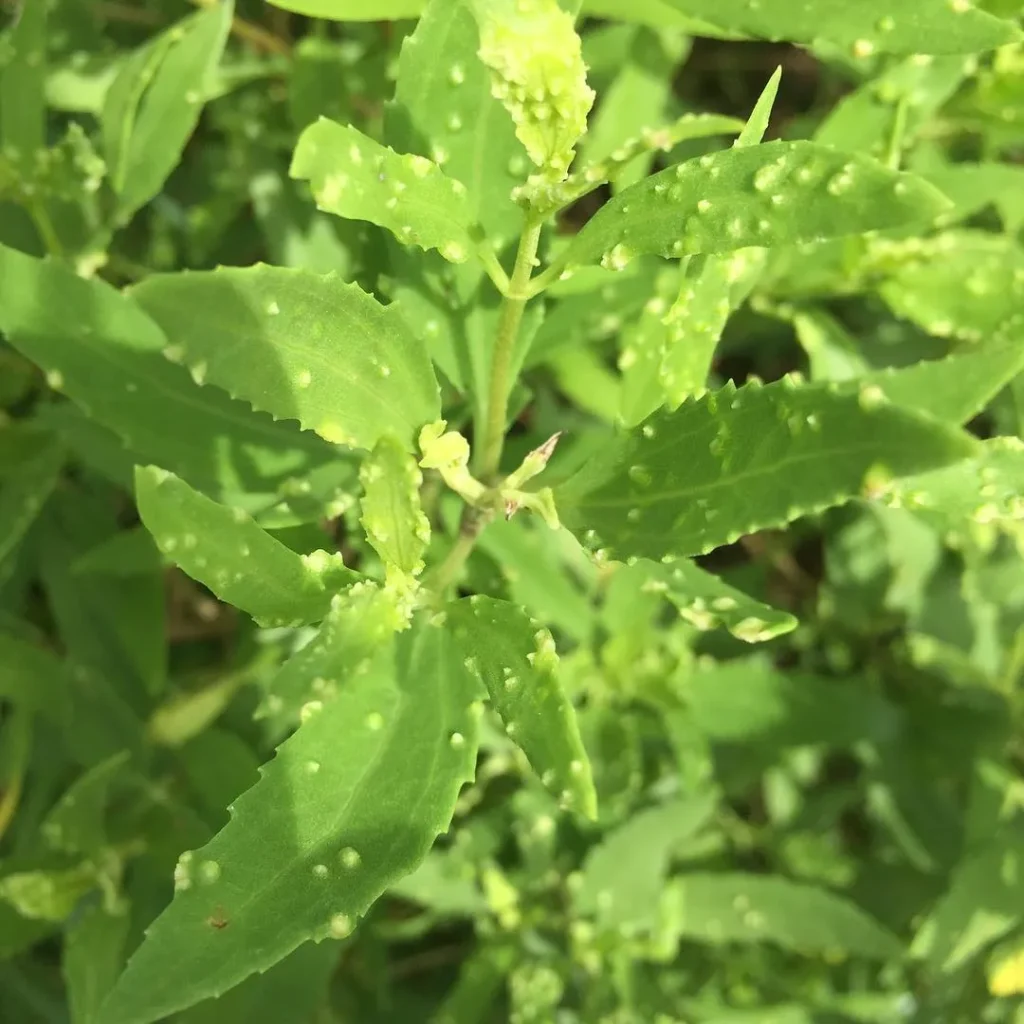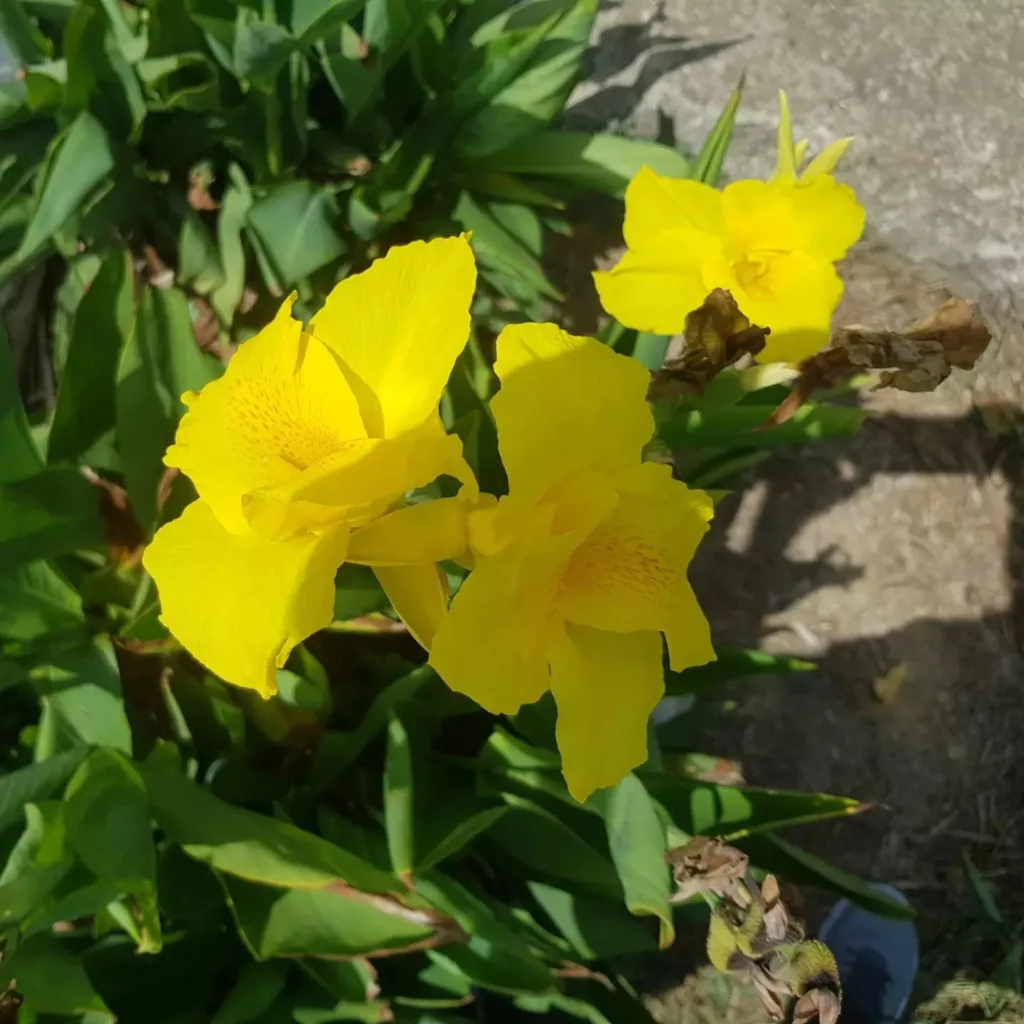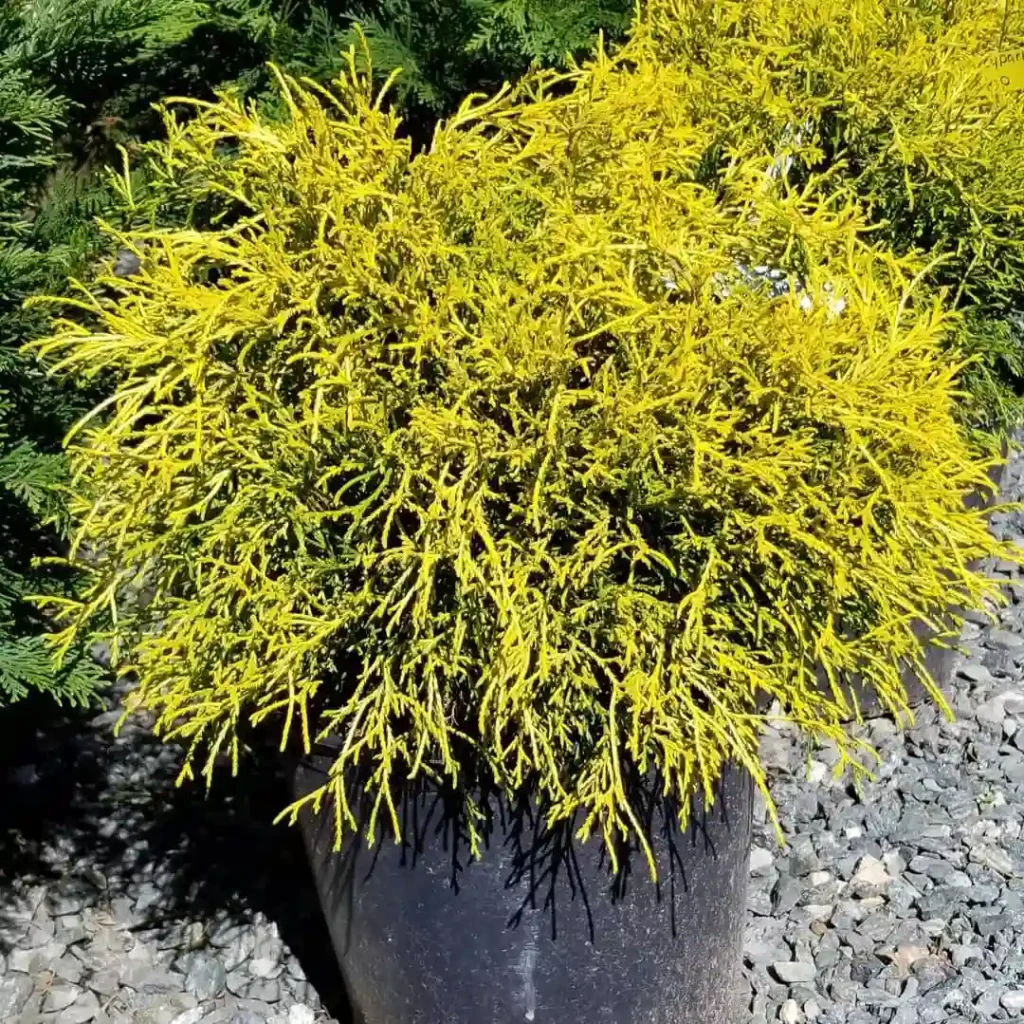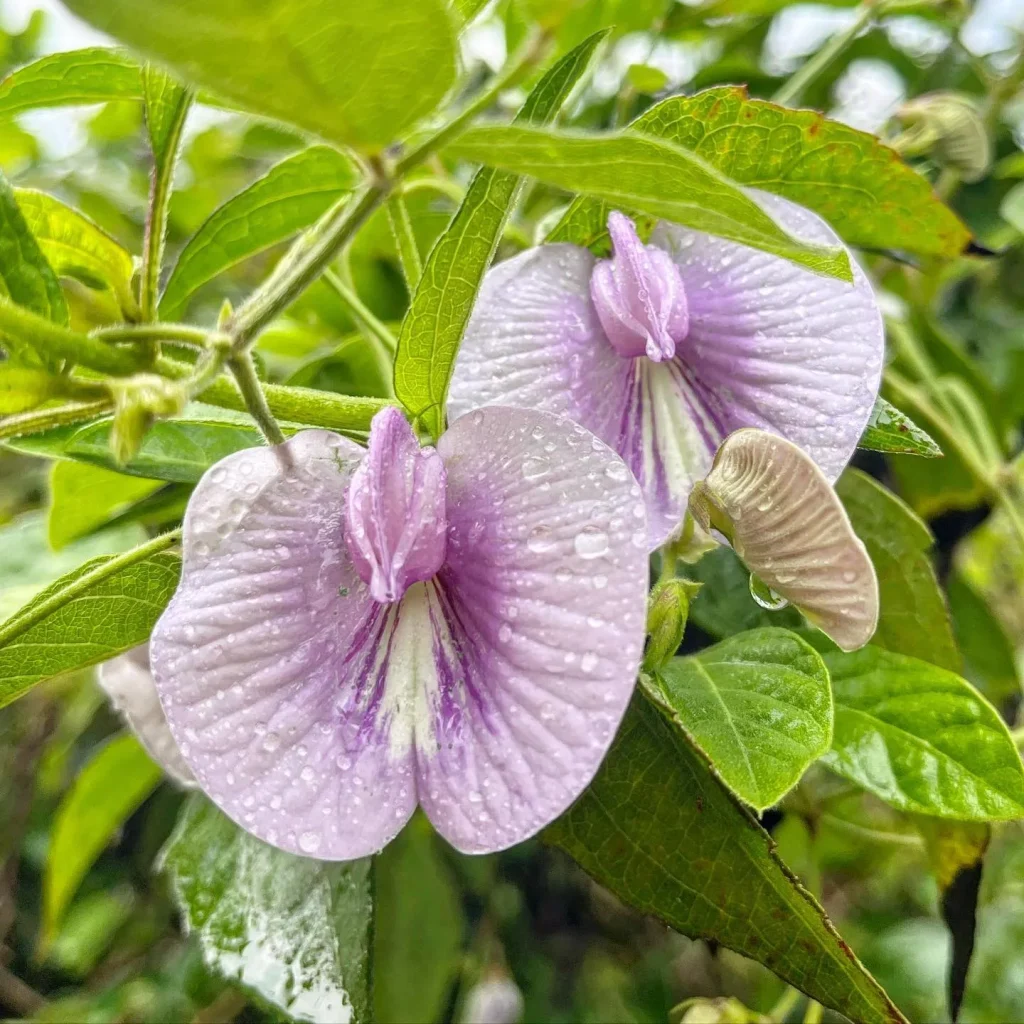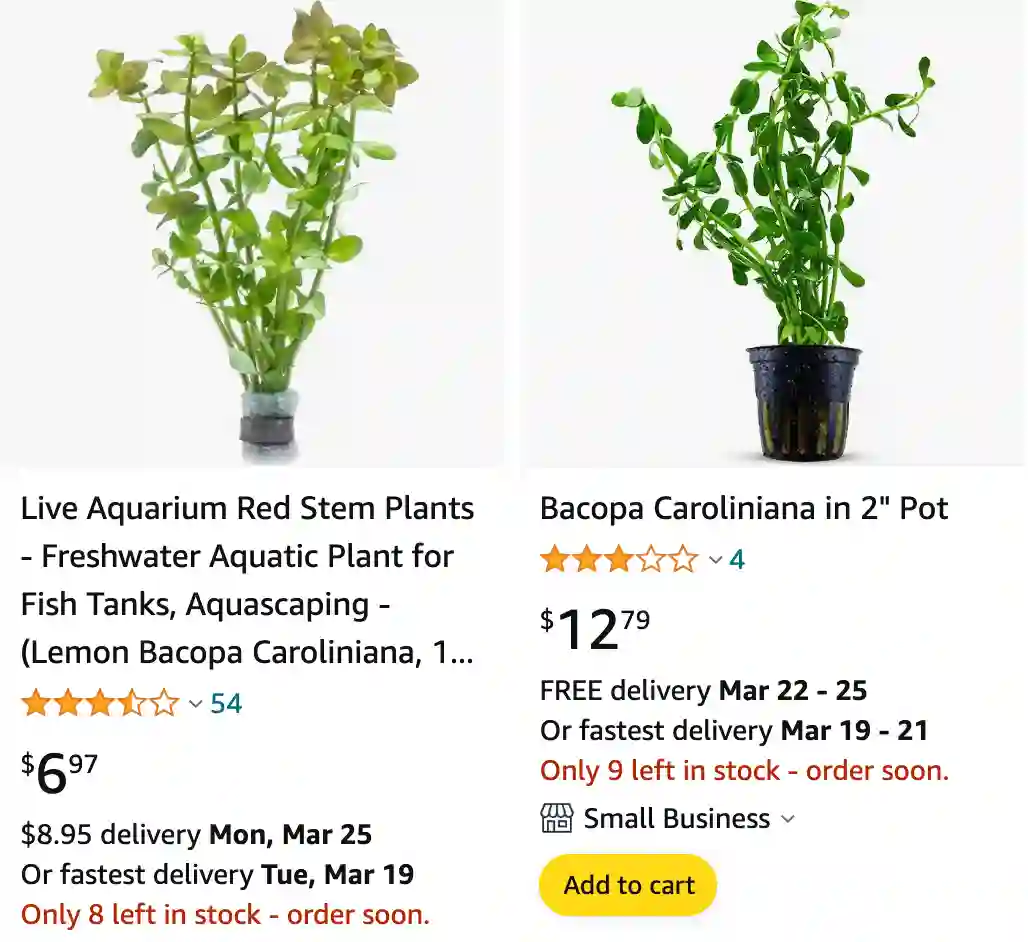
Bacopa Caroliniana vs Bacopa Monnieri
I’ve found that Bacopa Caroliniana thrives in my tank with its lush, green growth and easy care, while Bacopa Monnieri seems to struggle a bit, not growing as vigorously for me.
60 Species in Genus Bacopa
Bacopa Caroliniana vs Rotala
In my experience, Bacopa Caroliniana has a more appealing, dense appearance compared to Rotala, which has a more delicate and spindly look that doesn’t hold up as well in my setup.
How to plant Bacopa Caroliniana?
Bacopa caroliniana, also known as Lemon Bacopa or Blue Water Hyssop, is a popular aquatic plant used in aquariums and ponds. It’s relatively easy to plant and care for. Here’s a detailed guide on how to plant Bacopa caroliniana:
1. Preparing the Planting Site:
For Aquariums:
- Substrate: Use a nutrient-rich substrate. Bacopa caroliniana grows well in gravel, sand, or specialized aquatic plant substrates.
- Lighting: Ensure the tank has adequate lighting. Bacopa caroliniana prefers moderate to high light levels (2-4 watts per gallon of full-spectrum lighting).
- Water Conditions: Maintain a temperature range of 72-82°F (22-28°C) with a pH between 6.5 and 7.5. Bacopa caroliniana thrives in soft to moderately hard water.
For Ponds:
- Location: Choose a sunny location, as Bacopa caroliniana prefers full sun to partial shade.
- Water Depth: Plant in shallow water or at the edge of ponds where the water is up to 12 inches (30 cm) deep.
- Soil: Use nutrient-rich pond soil or aquatic planting media.
2. Planting Bacopa Caroliniana:
For Aquariums:
- Preparation: Rinse the plant gently under tap water to remove any debris or unwanted pests.
- Planting Method:
- Separate the stems and remove any leaves from the lower part that will be buried in the substrate.
- Insert the bare stem about 1-2 inches (2.5-5 cm) into the substrate, ensuring the plant is anchored firmly.
- Space the stems a few inches apart to allow room for growth and adequate light penetration.
For Ponds:
- Preparation: Rinse the plant to clean it from any debris and pests.
- Planting Method:
- For shallow water planting, you can directly plant the stems in the pond substrate or use aquatic planting baskets filled with pond soil.
- Remove the leaves from the lower part of the stems that will be buried.
- Anchor the stems in the soil or planting baskets, ensuring they are firmly placed.
3. Initial Care:
- Watering (Ponds): Ensure the water level remains consistent. Bacopa caroliniana prefers moist conditions.
- CO2 (Aquariums): Adding CO2 supplementation can boost growth, especially in high-light setups, but it is not strictly necessary.
- Nutrients: Fertilize regularly using an aquatic plant fertilizer to provide essential nutrients like iron, potassium, and trace elements.
4. Long-Term Care:
- Pruning: Regularly trim the stems to maintain desired height and encourage bushier growth. Replant the trimmed tops to propagate new plants.
- Water Quality: Maintain good water quality by performing regular water changes in aquariums and ensuring the pond water remains clean.
- Pest Control: Monitor for pests like snails or algae, which can affect the plant’s health. Use appropriate methods to control infestations if they occur.
Can Bacopa Caroliniana grow floating?
I’ve read that Bacopa Caroliniana can indeed grow floating, but in my experience, it does much better when it’s rooted in the substrate. When I tried leaving a few stems floating, they survived, but they didn’t grow as robustly or develop the vibrant green color they did when planted. Floating Bacopa Caroliniana can work in a pinch, but if you want the healthiest and best-looking plants, rooting them is the way to go.
Does Bacopa Caroliniana need CO2?
When it comes to CO2, Bacopa Caroliniana doesn’t necessarily need it, but it definitely helps. In my tank, I didn’t initially use CO2, and while the plants grew, their growth was slower and the leaves were a bit smaller. Once I started adding CO2, I noticed a significant boost in growth and overall health. The leaves became larger and more vibrant, which made a big difference in the appearance of my aquarium.
How do you propagate Bacopa Caroliniana?
Propagating Bacopa Caroliniana has been a fun and easy process for me. I simply cut off the top portion of a healthy stem and replanted it in the substrate. Within a few days, the cuttings started to develop roots and continue growing. It’s a great way to fill out an aquarium without having to buy more plants, and it’s satisfying to see new plants thrive from the cuttings I’ve taken.
How does Bacopa Caroliniana grow?
In my tank, Bacopa Caroliniana grows fairly quickly, especially with adequate light and CO2. It tends to grow upwards, reaching towards the light source, and the stems can become quite tall. The leaves are small and round, forming a dense, bushy appearance. I’ve found that it makes an excellent background plant due to its height and the way it can create a lush, green backdrop for other aquarium inhabitants.
How to prune Bacopa Caroliniana?
Pruning Bacopa Caroliniana is pretty simple and helps keep the plant looking its best. I usually trim the tops of the stems when they get too tall or start to look leggy. This encourages the plant to become bushier and prevents it from overshadowing other plants in the tank. The trimmings can also be replanted to propagate new plants, so nothing goes to waste.
Is Bacopa Caroliniana planted in a tank?
Yes, I’ve planted Bacopa Caroliniana directly in my tank, pushing the stems into the substrate where they quickly took root. It’s an ideal plant for aquarium settings because it’s hardy and adapts well to different water conditions. Plus, it adds a beautiful splash of green that complements other aquatic plants and provides a natural, serene environment for fish and other tank inhabitants.
If i die, water my plants!
